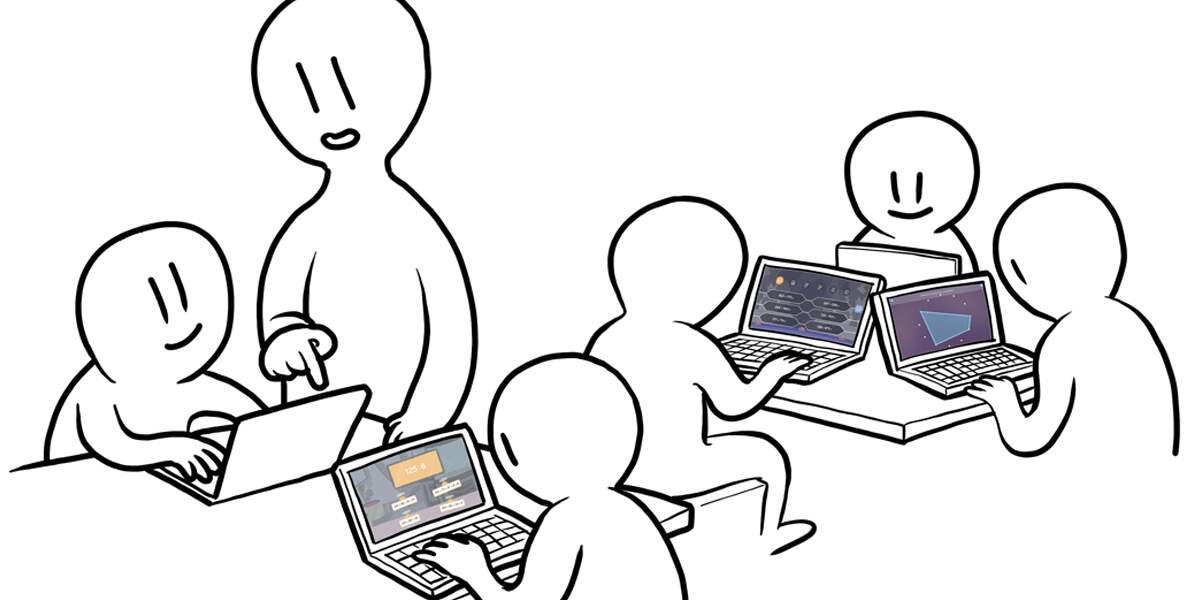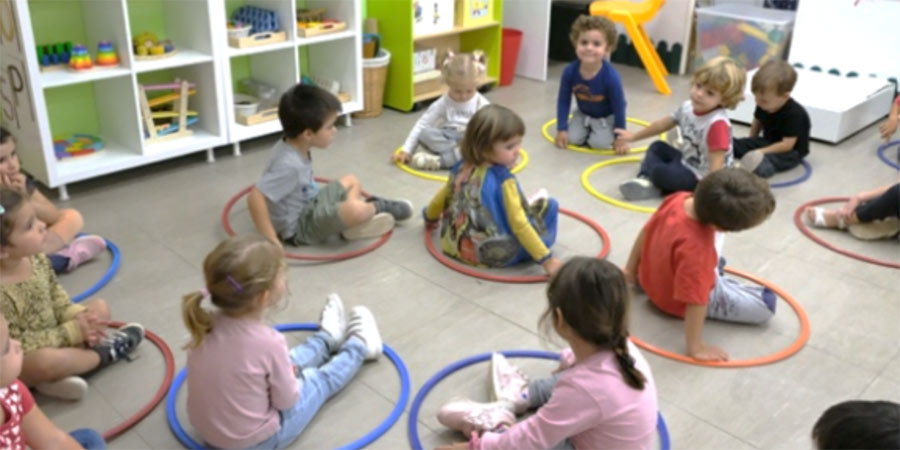Table of contents
At present, the debate on the pros and cons of the use of technology in the classroom has come under the spotlight. But what does educational research say about the use of technology in the classroom? Should we continue to use it? What should we use it for and when?
The debate around these three questions is still open. However, research suggests that the most determining factor is not including it in the classroom, but how we use it in the classroom. Audrey Azoulay, director of UNESCO, has said that “the digital revolution holds immeasurable potential, but just as there has been a warning about how it should be regulated in society, similar attention should be paid to how it is used in education. It should be used to improve learning experiences and add variety to lessons in order to increase engagement and delivery options for teachers.’’
At Innovamat, we have spent time reflecting on the role of technology in the classroom, carefully weighing its benefits and impact. In our curriculum, teachers use technology when preparing sessions, as well as when delivering them. As for the students, we have planned for them to use it once a week, during systematic practice. This practice consists of carrying out a set of tasks that help to consolidate classroom learning. This provides a good balance that allows teachers and students to take advantage of the benefits of technology and to integrate it in lessons in order to create a complete and meaningful educational experience.
The benefits of technology in the classroom
So, the key question is: are technological educational tools truly valuable for learning? Some of the main benefits we have found are:
- It is an available tool for teachers: technology can enhance the learning experience, as long as it is used appropriately and under the guidance of educators. The role of the teacher is fundamental, not only in delivering mathematical knowledge through conversation, manipulation, and experimentation, but also in providing systematic practice in the mathematics classroom, and creating engagement amongst students. In other words, teachers create a positive and motivating learning environment where students can think, reason and apply what they are learning in class.
- Explores the possibilities of the digital environment: technology is an excellent tool to practice content that is difficult to visualize on paper, such as 3D shapes, estimating angles or locating rational numbers on the number line. In addition, it allows teachers to use timers for certain activities, which is important for working on different skills such as calculation fluency.
- Helps with differentiation: technology makes it easier to adapt the content to each student’s needs and pace. It is not always possible to manage a group of 25 or 30 students, prepare differentiated activities for each one, and, at the same time, observe them and provide the help they need.
- Gives an immediate and quality response: the use of technological tools makes it possible for teachers to respond as soon as the student completes a task, thus providing immediate feedback. In this way, students are aware of their progress without having to wait until completing all the activities. For example, in the Innovamat App, if a student gives a wrong answer, we do not just correct them, but we guide them to discover where and why they have made the mistake. When designing our digital activities, we not only find this type of feedback, but we have also included tips or hints that students can use, as and when they need it.
- Makes decisions based on student progress: technology allows us to know if each student has achieved the learning objectives through the activities they have completed. This allows teachers to monitor through ongoing formative assessment, and thus be able to adapt resources to the needs of each student. This helps them to create differentiated resources aimed at reinforcing concepts, or to encourage deeper learning.
The pitfalls of technology
Using technology passively and without an educational purpose can bring certain consequences that must be taken into account:
- The impact on concentration: technology often comes with multiple distractions. Constant notifications on personal devices or access to social networks directly interfere with the level of concentration. Aware of this risk, we have designed our digital practice so that it can be carried out under teacher supervision, without interrupting the school environment. In case digital practice is completed at home, we recommend using a tablet or computer, and disabling the notifications when using the app. We also encourage adult supervision.
- Exposure time: sometimes the problem is not what we do on the screen, but the time we spend on it, and the other activities we are replacing it with. Many digital products are designed with a hidden purpose: to create dependency in the user. Our app has been designed with an educational purpose in mind, therefore we aim to avoid dependency. In addition, taking into account that overexposure to digital devices is not recommended, our application is designed to be used in the primary and secondary classroom for only one hour a week, and in kindergarten for 15 minutes a week.
- Replicating without adding value: reproducing the same things taught in class in digital format does not improve the learning process. It is not a matter of transferring textbook content to a PDF, as this substitution does not bring anything new. In addition, there is the added management of technical issues, devices that run out of battery, providing support and training to adapt to new software, and updates.
- Over-virtualizing education: learning that occurs through dialogue, manipulation, collaboration and discovery, is most naturally achieved in the physical environment of a classroom. Since we are aware of this, the digital practice part of our curriculum only represents a small part of the whole learning process. At Innovamat, we believe that direct interaction between students and teachers, the possibility to participate in practical activities, teamwork and the development of social skills are fundamental aspects of face-to-face teaching, especially in the compulsory educational stages. Of course, there may be exceptional circumstances where remote learning is the only viable option, such as the recent pandemic. Even in these circumstances, our purpose is to promote competent learning through well-rounded activities.
How technology supports mathematics learning
The debate surrounding the use of technology in education is not yet over. The main challenge lies in finding the best way to integrate it into the classroom. As previously discussed, technology can benefit math learning by helping teachers to differentiate efficiently, thus providing a more personalized learning experience as students can explore the digital environment. Technology also help teachers to give feedback that is tailored to the needs of each student, and track the progress of the class. However, if not used properly, we have already seen that there are consecuences. At Innovamat, we accept the challenge by encouraging a responsible use of technology, promoting its benefits and guiding teachers to use it effectively in the classroom.

References
Bradley, D. (2019) Screen Time and the Brain. Harvard Medical School. https://hms.harvard.edu/news/screen-time-brain
Desmurget, M. (2020). La Fabrique du crétin digital. POINTS.
GEM Report UNESCO. (2023). Global Education Monitoring Report 2023: Technology in education: A tool on whose terms? (1a ed.). GEM Report UNESCO. https://doi.org/10.54676/UZQV8501
Hassinger-Das, B., Zosh, J. M., Hansen, N., Talarowski, M., Zmich, K., Golinkoff, R. M., & Hirsh-Pasek, K. (2020). Play-and-learn spaces: Leveraging library spaces to promote caregiver and child interaction. Library & Information Science Research, 42(1), 101002. https://doi.org/10.1016/j.lisr.2020.101002
Higgins, S., Xiao, Z., & Katsipataki, M. (2012). The Impact of Digital Technology on Learning: A Summary for the Education Endowment Foundation. Full Report. En Education Endowment Foundation. Education Endowment Foundation. https://eric.ed.gov/?id=ED612174
Kirkwood, A., & Price, L. (2013). Examining some assumptions and limitations of research on the effects of emerging technologies for teaching and learning in higher education. British Journal of Educational Technology, 44(4), 536-543. https://doi.org/10.1111/bjet.12049
Lei, J., & Zhao, Y. (2007). Technology uses and student achievement: A longitudinal study. Computers & Education, 49(2), 284-296. https://doi.org/10.1016/j.compedu.2005.06.013








